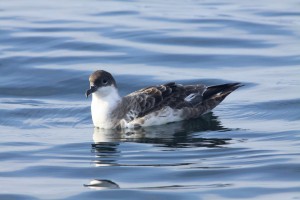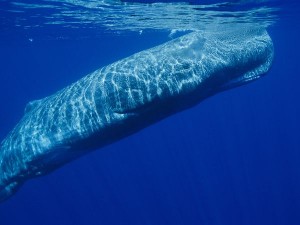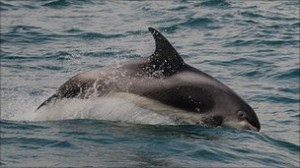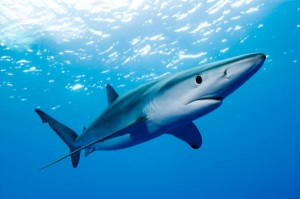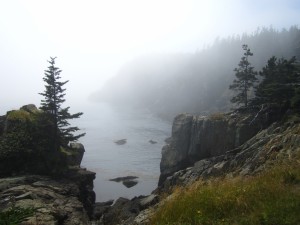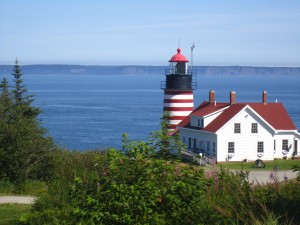There’s something about being on an all-female research vessel, searching for a right whale mother and calf pair in the grey palette of the Bay of Fundy, that makes you think about our gender. More specifically – motherhood. How exactly does the relationship between a mother and her calf evolve? Can this rate be observed (and subsequently measured) from studying their behavior and vocalizations? As we round out our third year of a this five-year project, we are finally starting to accrue data to tackle these questions. Our research goal: study the interactions between right whale mother/calf pairs over the calf’s first year. We accomplish this by following them from their winter calving grounds off Florida and Georgia to their springtime feeding areas off Massachusetts, and finally to their summer mating grounds here in the Bay of Fundy (BOF). Our research tools: concurrent behavioral and acoustic sampling from a small boat platform. Our current BOF subjects: Catalog #3390 and her calf.
#3390 is the the only mother sighted thus far in BOF. Researchers aren’t sure of her birth year, but she was first observed in 2003 as a juvenile. She has suffered three fishing gear entanglements, leaving her with noticeable white scars on her peduncle (tail stock) and flukes. Her calf, an almost-weaned male, is her first known offspring. Thus far in our field efforts, I’ve had the opportunity to follow #3390 and her calf three times in the southeast U.S. calving grounds during the winter, and now this summer, three times in BOF.

Deploying hydrophones (microphones designed to record or listen to underwater sound), we are able to eavesdrop on the subsurface behavior of these elusive individuals. In the southeast, we recorded roughly 12 hours with #3390 and her calf. The number of potential calls we can attribute to this pair are in the single digits. So far here in the northeast, we’ve recorded just shy of 5 hours with #3390 and her calf. The number of potential calls we can attribute to this pair are well in the two hundreds!
It’s clear that the lapse in time has revealed a more vocal mother and calf pair. Time has also shown a larger calf, now bulked up with his mother’s fat reserves; greater separation distances between the mother and her calf, as the mother feeds on scattered zooplankton patches and the calf prepares to be weaned; and more interactions between both the mother and the calf with other right whale individuals in the population.
Combining concurrent acoustic and behavioral data, we can start to ask questions about what exactly these vocalizations are revealing. Are they reunion events, as the mother and calf find their way back to each other in the void of the ocean? Are they separation events, as the calf prepares to leave the mother and explore? “Be back by 10PM, Mom.” Or perhaps they are teaching events, as the mother tries to pass on the right whale repertoire so the calf can communicate with the population at large? As the BOF season wraps up, we’re looking forward to analyzing our data to shed some light on these questions. The more we understand a year in the life of right whale mother/calf pairs, the more we can do to ensure their protection. In the interim though, we’ll keep listening…
-Sarah Mussoline, Research assistant, Woods Hole Oceanographic Institution
